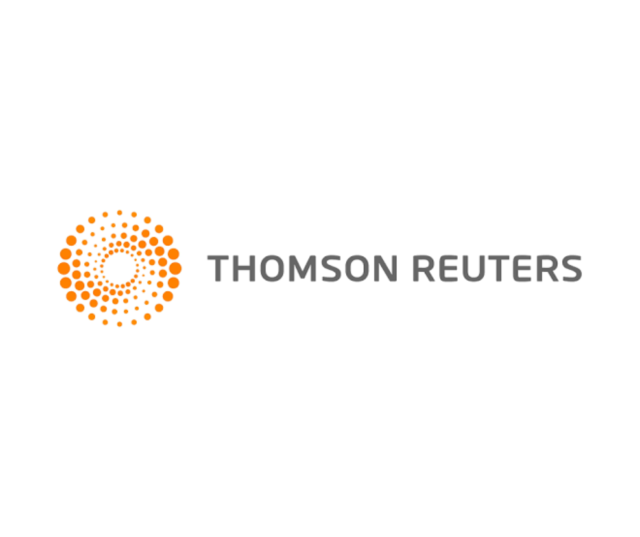The last few weeks have placed a spotlight on longstanding social inequities that continue to persist today. By the end of May, Black Lives Matter protests swept across the United States as a reaction to police brutality directed toward the Afro-American community. Locally, conversations on the challenges that women face have been ignited as a result of several posts on social media advising women on what not to wear to avoid being raped. June was Pride Month, and discussions on how to celebrate it thrived amid the coronavirus pandemic.
Global organization Thomson Reuters understands the importance of diversity and inclusion in the workplace and in the communities where we live and work, and underscores allyship as a crucial component in cultivating a culture where everyone is treated fairly.
In a recent talk for the Diversity & Inclusion in Asia Network on the theme, “Creating Sustainable Opportunities, Becoming Strategic in Our Approach to Allyship,” Thomson Reuters Diversity & Inclusion Lead Marla Garin-Alvarez provided practical advice for organizations looking to embrace inclusivity.
Garin-Alvarez explained that an ally can be formally defined as “someone from a dominant social identity group who stands up in support of members of an underrepresented group who are subjected to discrimination and injustice.” It could also simply mean “being vulnerable and courageous to speak up for others, especially when it is needed the most.”
Thomson Reuters has put in place a process to cultivate allyship: it starts with awareness, which leads to self-reflection, which leads to action, which ultimately spurs advocacy. This process comes from a perspective of empathy and rooted in the company’s values of trust and partnership.
Empathy and allyship go hand in hand. Garin-Alvarez cited GuidetoAllyship.com which outlines an ally’s role: “To be an ally means to take on the struggle as your own; to stand up for others even when you feel scared; to transfer the benefits of your privilege to those who lack it; and to acknowledge that even if you feel pain, the conversation is not about you.” She emphasized that “we can all be allies when we lend our voices alongside oppressed ones. We want to know how we can be vocal allies against discrimination, harassment, inequality. We can look at this as a skill that we need to learn and develop, a muscle that we need to keep using so it becomes part of our strength.”
Part of raising awareness is a lot of self-reflection and education. On the topic of racial inequity, Garin-Alvarez reflected that, “Asians need to take a long, hard look on how we are complicit in perpetuating white privilege. In the US, it’s about being the ‘designated model immigrants’—polite, law-abiding, compliant, subject to higher expectations—often at the expense of black and indigenous peoples.”
Garin-Alvarez notes that “In Asia-Pacific, we experience the lingering effects of hundreds of years of colonialism, where the lightness of one’s skin can spell the difference in meeting beauty standards in India, or blackface being an object of ridicule in Japan,” she shared. “Professional competence can still depend on how well you speak American English or know Western cultural references in Singapore or Hong Kong. These are deeply ingrained biases, and we know we have to consciously overcome them and change our behavior.”
Thomson Reuters recently launched a Racial Discrimination and Social Inequity toolkit to inform its leaders, managers, and employees of the company’s stand through messages from CEO Steve Hasker to heads of TR’s global businesses who have been conducting listening sessions among employees.
The toolkit equips TR leaders and employees with the necessary advice in engaging in conversations on topics such as racial inequity in an authentic, personal manner, whether among themselves or with the company’s customers. The toolkit also directs all managers and employees to an Inclusive Learning Roadmap that includes four short e-learning modules on Bias, Inclusion, Micromessages, and Bringing One’s Whole Self to Work. The company is currently designing an Unconscious Bias workshop for senior managers, and will host “Let’s Talk Race,” a panel discussion with senior black leaders in the organization to sustain self-reflection and understanding of this complex issue.
Thomson Reuters has several resource groups for its employees. In Asia, these include Women@Thomson Reuters, Pride@Work, and the Early Careers Network. In the UK and the Americas, Thomson Reuters also has the Asian Affinity Network, Latino Employee Network, Black Employee Network, and the Disability Network.
Garin-Alvarez shared the importance of allyship, even as each group has their own specific activities. “Our LGBT employees and the Pride@Work resource group initially only talked among themselves. To promote gender diversity and inclusion, we needed allies to actively participate, articulate, and advocate the company’s response to promote inclusion. We took advantage of the International Day Against Homophobia, Transphobia and Biphobia celebrations every May 17 and Pride Month in June to involve allies from both our employees and our customers,” she said.
Thomson Reuters has also set a goal for 40% female representation in senior leadership roles by the end of 2020. The company recognized that to attain this goal, men need to partner with women for gender balance and equity in the workplace and this commitment has been an ongoing evolving theme each year, kicked off every International Women’s Day in March. Externally, TR has been a pioneer co-founder of male allies’ initiatives in Hong Kong and Singapore to promote gender partnership.
“We cannot be siloed in our approach. We want everyone to support each other,” Garin-Alvarez shared, adding that each of the employee resource groups within Thomson Reuters have partnered with each other through the years to raise awareness on opportunities and inclusive behavior for all underrepresented groups in the organization.
“We’ve identified strong leaders among high-performing employees for our resource groups. They are active and passionate in their interests, and they work with global counterparts in coordinating their activities. They show up at each other’s events and have joint activities for greater impact,” she explained.
Collaboration between and among groups has also helped deepen conversations in the workplace. Garin-Alvarez cited that the close collaboration among Women@Thomson Reuters and Pride@Work networks have strengthened the understanding among women, lesbians, and bisexuals of each other’s challenges, given the lens of intersectionality.
In response to Black Lives Matter protests across the US, Thomson Reuters President and CEO Steve Hasker wrote, “We are an organization that understands the power of diversity and inclusion, and we must do more because if purpose-driven organizations like ours do not act in times like these, then we are part of the problem. I am resolved that our company will be part of the solution. This company has always and will always engage in difficult dialogue about how we can bring people together to address issues which affect our communities, including global efforts to drive peace, justice and strong institutions that get to the heart of the state of trust.”
This statement is punctuated by several concrete actions undertaken by Thomson Reuters. The company will make an investment of US$1 million in rebuilding Minneapolis, where it has maintained operations since 1892. It also doubled paid volunteering leaves for 2020 from 16 hours to 32 hours, allowing regular employees to help in their communities. Thomson Reuters also declared Juneteenth or June 19 a US company holiday to honor and celebrate the effective end of slavery in the US.
Being part of the solution means recognizing that racism and social inequality is everywhere, and as members of a global organization like Thomson Reuters, everyone can pursue action and advocacy, to change the way things are, anywhere in the world.
Garin-Alvarez noted that the commitment of leadership to diversity and inclusion is crucial at all levels, as they help shape the organizational culture. “At the same time, diversity and inclusion does not depend on leaders alone and it’s not optional,” she clarified, “everyone owns diversity and inclusion because we all need to commit to building diverse and inclusive teams that drive innovation and results, and positive change in the world.”




